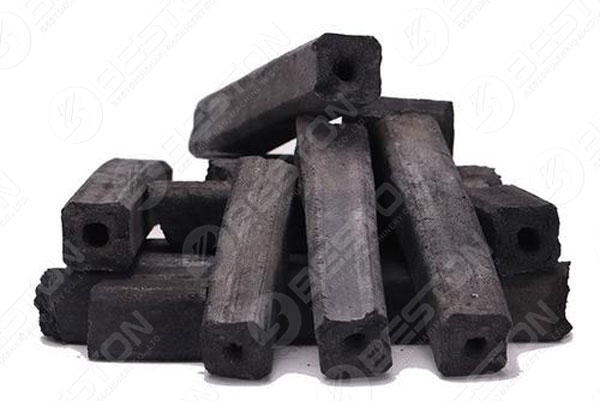In an era where the fight against climate change is more urgent than ever, the quest for sustainable energy solutions has led us to explore innovative technologies. Among these, biomass pyrolysis stands out as a promising method to mitigate carbon emissions and contribute to a carbon-neutral future.
Understanding Biomass Pyrolysis
Biomass pyrolysis plant is a place to conduct thermochemical process that decomposes organic materials at elevated temperatures in the absence of oxygen. https://es.bestonpyrolysisplant.com/biomass-pyrolysis-plant/ This fascinating transformation converts biomass—such as agricultural residues, wood chips, and organic waste—into valuable products like biochar, bio-oil, and syngas. The magic happens within a temperature range of 300 to 700 degrees Celsius, where the complex molecular structures of biomass break down into simpler compounds.

The Carbon Neutrality Equation
Achieving carbon neutrality means balancing the amount of carbon dioxide released into the atmosphere with an equivalent amount sequestered or offset. Biomass pyrolysis plays a pivotal role in this balance. When biomass is grown, it absorbs CO2 from the atmosphere. Through pyrolysis, a portion of the carbon is locked into biochar, which can be used as a soil amendment, thereby sequestering carbon for centuries. This sequestration offsets the CO2 released when bio-oil and syngas are used as fuels, making the entire process potentially carbon-neutral.
The Marvel of Biochar
One of the standout products of biochar machine is biochar, a stable, carbon-rich material. When incorporated into soil, biochar improves soil health, enhances water retention, and increases agricultural productivity. More importantly, it acts as a long-term carbon sink. Biochar’s ability to sequester carbon is a game-changer in our quest for sustainability. Unlike other organic materials that decompose and release CO2 back into the atmosphere, biochar remains stable for hundreds to thousands of years, effectively locking away carbon.

Bio-Oil: A Renewable Energy Source
Another significant product of biomass pyrolysis is bio-oil, a dark, viscous liquid rich in energy. Bio-oil can be refined and used as a renewable fuel in industrial processes or for heating. Its versatility extends to the chemical industry, where it serves as a feedstock for producing various chemicals and materials, reducing our dependence on fossil fuels. The combustion of bio-oil is more environmentally friendly compared to conventional fossil fuels, as it releases fewer pollutants and greenhouse gases.
Syngas: The Multi-Functional Energy Source
Syngas, a mixture of hydrogen, carbon monoxide, and other hydrocarbons, is another valuable output of coconut shell/bamboo/rice husk/straw/sawdust/wood pyrolysis plant. This gaseous product can be utilized in multiple ways, including as a fuel for generating electricity or as a building block for synthesizing chemicals. Syngas can be cleaned and upgraded to produce hydrogen, which is a clean fuel with immense potential in the energy transition. Its adaptability makes it a cornerstone in the move towards sustainable energy systems.
Environmental and Economic Benefits
The environmental benefits of biomass pyrolysis are substantial. By converting waste biomass into valuable products, this technology reduces landfill use and mitigates methane emissions from decomposing organic waste. Additionally, the process helps decrease reliance on fossil fuels, curbing CO2 emissions and contributing to a reduction in the overall carbon footprint.
Economically, biomass pyrolysis opens new avenues for revenue generation. Farmers and businesses can profit from selling biochar, bio-oil, and syngas. Furthermore, the use of biochar in agriculture can lead to higher crop yields and reduced dependency on chemical fertilizers, resulting in cost savings and increased profitability. Investing in pyrolysis technology can also create green jobs and stimulate local economies, fostering sustainable development.
Challenges and Future Prospects
Despite its promise, biomass pyrolysis faces several challenges. The technology requires significant initial investment and infrastructure development. Additionally, the quality and consistency of pyrolysis products can vary based on the type of biomass used and the process conditions. Research and development are essential to optimize processes, enhance product quality, and scale up operations.
Looking ahead, the future of biomass pyrolysis is bright. Advances in technology are expected to improve efficiency and reduce costs. Integration with other renewable energy systems, such as bioenergy with carbon capture and storage (BECCS), could amplify its carbon sequestration potential. Moreover, supportive policies and incentives could accelerate the adoption of pyrolysis technologies, driving us closer to a carbon-neutral world.
Conclusion
In the grand tapestry of sustainable solutions, biomass pyrolysis is a vital thread weaving together environmental, economic, and social benefits. By transforming waste biomass into valuable products and sequestering carbon, this innovative technology offers a powerful tool in the battle against climate change. As we strive towards a carbon-neutral future, the adoption and advancement of biomass pyrolysis will undoubtedly play a crucial role in achieving our global sustainability goals. Let us assist you further at Beston Company.